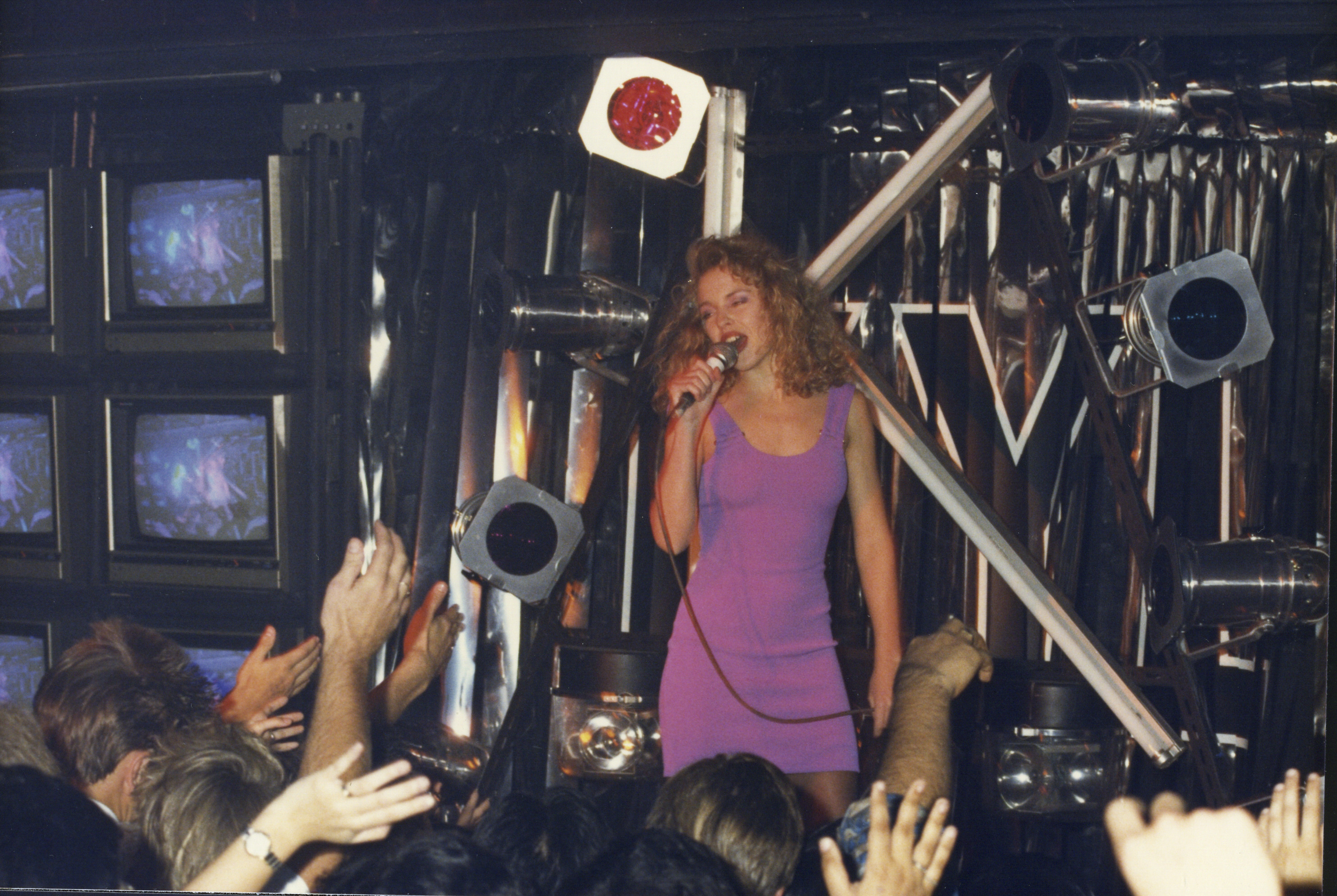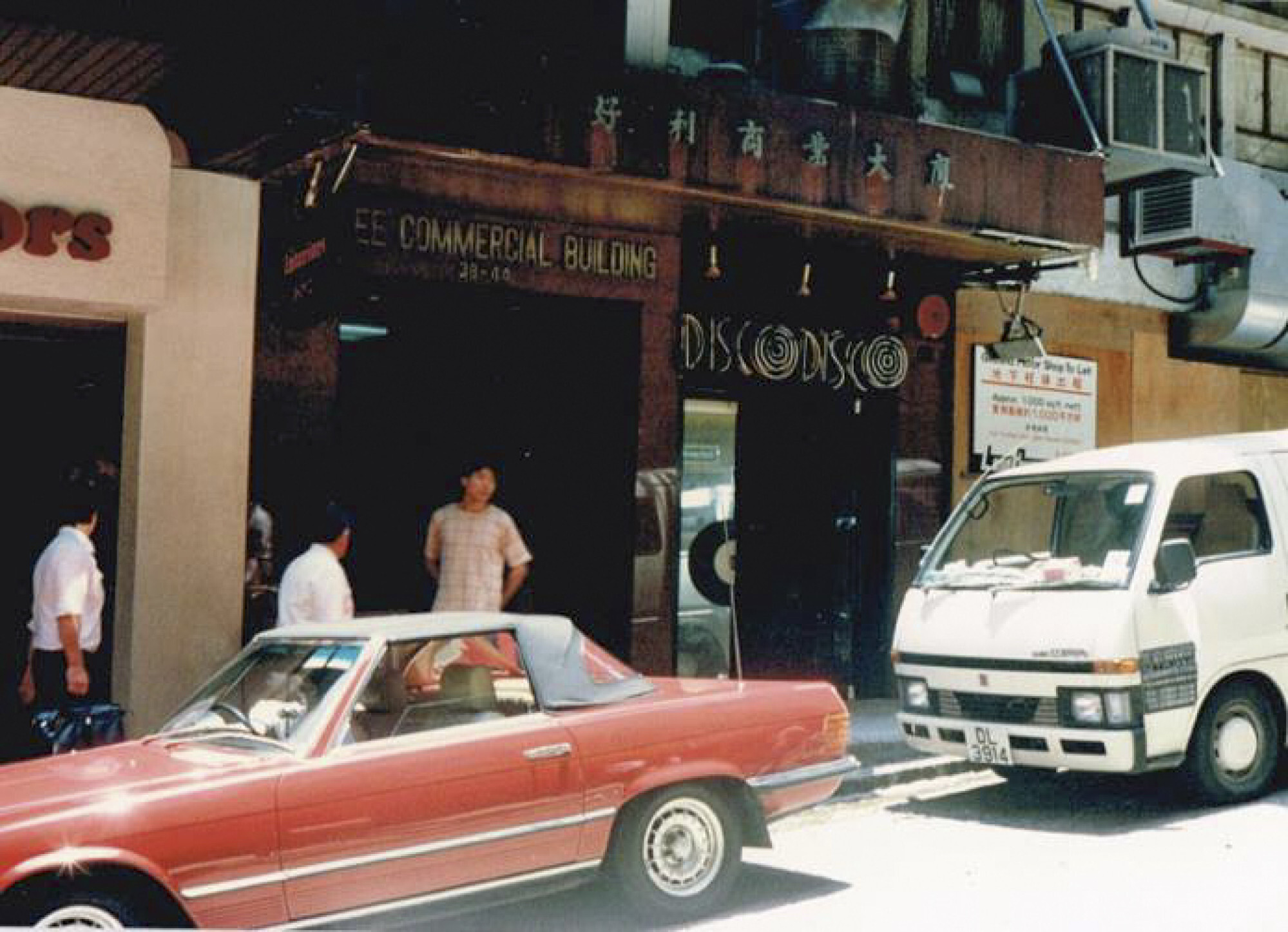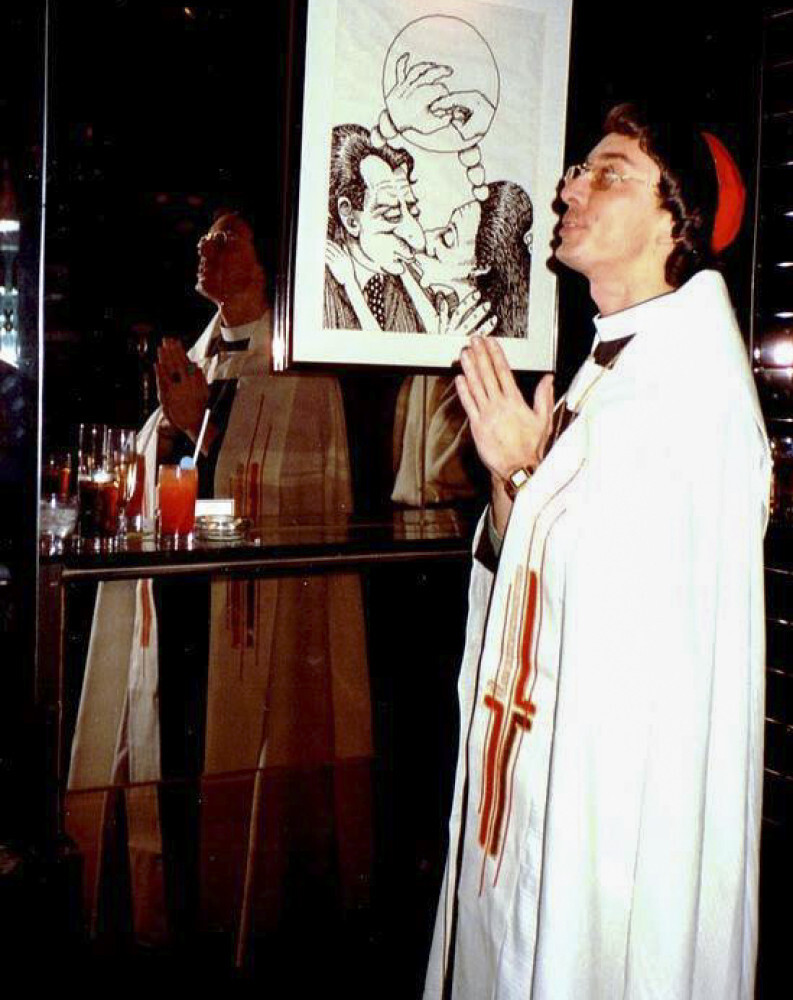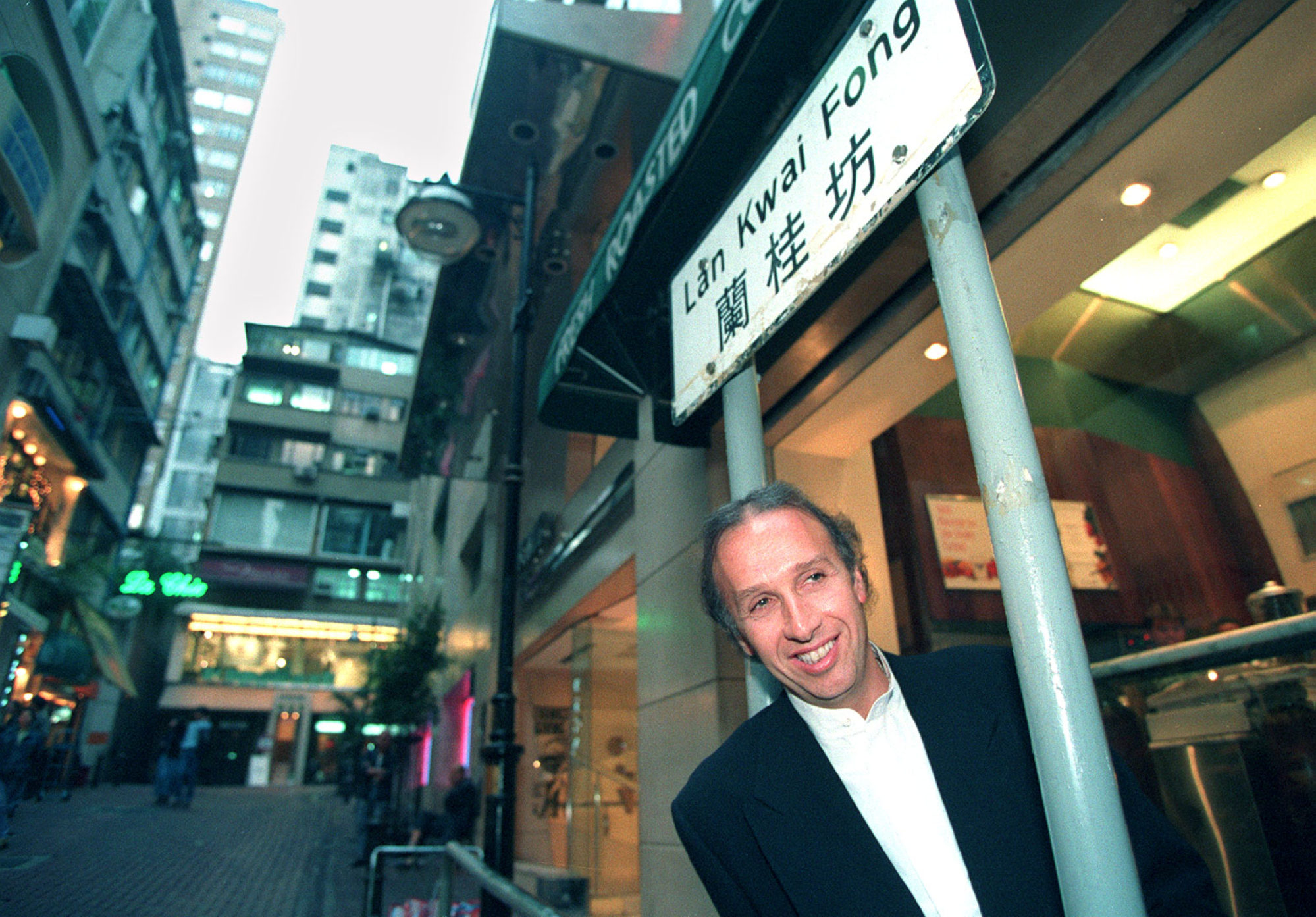
- Disco fever hit the city in 1978, with clubs like Disco Disco and later Canton Disco, where Kylie Minogue made her debut, drawing the cool cats – and the police
In 1977, Saturday Night Fever exploded onto cinema screens across the globe. Many a teen swooned as a young John Travolta dressed in front of his bedroom mirror, preparing for his Saturday night burn across the dance floor at the 2001 Odyssey nightclub in flares, polyester shirt and with an era-requisite gold medallion nestled in a mound of chest hair.
New York’s Studio 54 flung open its doors that same year, in an old Broadway theatre in Midtown Manhattan. Celebrities, designers and socialites flocked to its altar of sex, drugs and disco. John Lennon, Mick and Bianca Jagger, Debbie Harry, Andy Warhol, Cher and Diana Ross were regulars, and the only way a non-luminary could gain entrance was to dress like they belonged inside, or were there to supply cocaine.
What had been an underground trend in the United States since the early 1970s – mainly a Hispanic, black and gay thing – disco was by some accounts already on its way out by the time Saturday Night Fever arrived, but once Travolta started strutting to that Bee Gees soundtrack, those syncopated bass lines were suddenly mainstream, even arena rockers like Kiss feeling they had to get in on the act.
Hong Kong at the time, despite holding the world’s top spot for ostentatious neon, was a mix of Chinese nightclubs, from high-end hostess bars with live singers to seedy Wan Chai joints that primarily served British military and visiting allied warship troops docked in Victoria Harbour.

There were just two television channels in Hong Kong at the time, TVB and Rediffusion TV, and most programmes were several years out of date. It was a time when people still listened to the radio, and Canto-pop was in its infancy.
While the rich flaunted their Rolls-Royces and diamond-studded wrists and necklines, the poor lived in squatter villages dotted around the hillsides. But with ever more hopefuls from China arriving to find their fortune, a middle class was quickly emerging.
Even Sir Run Run Shaw, after a day’s work in Hong Kong’s booming film industry at his namesake Shaw Studios, was known to hold court at the VIP table, in a discreet corner of the hotel’s vast basement venue.
Another regular partygoer at The Scene was a son of Lane Crawford managing director Robert Huthart. Gordon Huthart was an expat rich kid who happened to be gay in a town where homosexuality was illegal, and despite his department-store-royalty status, Bull says Huthart Jnr “kept getting thrown out for dancing with other men”.

“He was quite famous for that, because there was this house rule that there would be ‘none of that’ on the premises. And it became his passion, the fact that it was totally outrageous that men couldn’t dance together in Hong Kong. And that was his inspiration for starting up Disco Disco.”
As the story goes, Huthart Jnr found a grubby basement just uphill from the Central business district, in a building on the corner of D’Aguilar Street and Lan Kwai Fong. (A lone flower stall opposite, one that still stands today, provided the only pop of colour in this bleak warren until Disco Disco opened.)
Bull, now a Shanghai-based DJ and nightclub owner, was DJing at the Taipan back then, a basement club in the Miramar Shopping Centre on Nathan Road – one of a wave of new discos opening up on the far more happening Kowloon side. He was not convinced a nightclub in that location, all godowns and sleazy marriage brokers, would work.
Nonetheless, “Disco Disco opened in 1978, a year after Studio 54,” says Bull. “With the warm-up of the Saturday Night Fever pandemic, if you like, disco was like a virus, and Huthart was one of Hong Kong’s great enterprise stories. He got inspired by Studio 54 and managed to find the money, site and team within a year.”
Seeing Huthart Jnr’s new club take off, Bull came on board to DJ at Disco Disco in 1979, by which time there were queues snaking down D’Aguilar Street to Queen’s Road, partygoers vying to breach the narrow entrance as they took those few steps that opened onto the main dance floor lit by the ever-present disco ball and strobe lights, with speakers pumping out everything from Sylvester’s You Make Me Feel (Mighty Real) to A Taste of Honey’s Boogie Oogie Oogie.
Recalling Hong Kong’s first 7-11, first shopping mall, and more
There was a long bar with a few stools, the only seating in the venue, and off to the right was a smaller, mirrored room, where the true posers would show off their moves, and if you didn’t have a partner, you danced with your own reflection.
“I’m not sure why we lost our liquor licence,” Bull says. “But the persecution of the gay community was still police business at that time,” and the raids started within a few months of the opening of DD, as the club was affectionately known. Huthart Jnr flaunted his sexuality and, within a year, he had been arrested and jailed for buggery – a conviction being one legal reason for rejecting or revoking a liquor licence.


“It was filled with groovy people, designers, film and TV stars, tall, elegant models like Grace Yu and her posse,” says Tsang, who has remained a fixture on Hong Kong’s nightlife scene, now owning a bar in SoHo and running luxury media company The Antithesis.
“I remember in 1979, DD held the Hong Kong heat of the World Disco Dancing Championship. They had a catwalk in the middle of the dance floor. Robert ‘Disco King’ Mak [Tak-law] came first with an amazing dance routine, and went on to place 4th in the international championships.” (After his success in the world finals, later held in London’s Empire Ballroom, on his return to Hong Kong, Mak featured in several forgettable Cantonese dance movies including 1980’s Disco Bumpkins, starring George Lam Chi-cheung.)
As one of the early Lan Kwai Fong club-goers, long before the acronym of LKF was synonymous with market-variety debauchery, Tsang says many expat and wealthy Chinese kids who had been sent overseas to be educated would “come back for the summer holidays with their Western influences and everyone was into disco music”.


Tsang recalls fondly the music at DD, which included early hip hop, an unexpected underground import before the launch of MTV, in 1981. “Most disco music at that time was black music, it was late-era Jackson 5, Earth, Wind & Fire, but the sounds were also moving to electronic music, like very early Depeche Mode and Ultravox.”
DD’s street cred attracted Tenny Cheung, a member of Illustration Workshop, a group of eight artists whose work ranged from graphic design to fashion.
“We enjoyed the people watching,” says Tenny Cheung. “It was inspiring.”

“The first nightclub I played music at was The Cage, I think it was early 1979,” says DJ Roy Malig. Located just off Carnarvon Road, in Tsim Sha Tsui, it was a small venue with a guest list similar to those that would come to define LKF clubs, where everyone from hairstylists to models and celebrities danced the night away.
“Me and my brother John started hanging out there. At that time there was no DJ, they were playing cassettes,” says Malig. “The music was the same every night and people were getting bored. We had records at home so we asked the boss if we could play them at the club. They didn’t have a proper system but I just started playing records instead of the cassettes. It was my first DJ job.”
“We wanted to create a cool and sophisticated vibe, attracting sophisticated clientele, definitely different from Wan Chai. We were the first club in Lan Kwai Fong at that time besides Disco Disco.”
I would also buy materials to make my own costumes. I wasn’t very good at sewing but I would buy vinyl and elastic and attach everything together with ring binders to make the outfitsLisa Shearer, a former go-go dancer, who now works as a make-up artist in the New Zealand film industry
Also in 1983, around the corner from DD, the man now synonymous with the development of LKF, Allan Zeman, opened his first venue, California restaurant, which featured a resident DJ and occasionally showcased international acts, including the first Hong Kong performance by New York-based male strippers the Chippendales.
“Allan Zeman at that time was in the garment business. He used to be a patron in our restaurant and he wanted to start his own version,” says Rhomberg, and just like that, “California restaurant was born”.
Tsang often hung out at California. “It was right there on the corner,” she says. “The music was great, the cocktails were great. I would sit there all day drinking champagne with friends. Because of my job I had to hang out with lots of journalists, it was a fun crowd. It was the ’80s, everyone was making decent money, we were ordering champagne by the bottle.”
By this time, Hong Kong’s music and nightlife scenes were lighting up. Bull had opened a record shop at the top of Lan Kwai Fong, and was soon approached by investor Tony Law to open a nightclub in Harbour City, in Canton Road.

Bull had a reputation as a DJ with savvy marketing skills and Canton Disco quickly became “a brand that would be known internationally as cool”, he says, but that was also very “Hong Kong”.
Bull was arguably the first to tap into Hong Kong’s inherent character as not completely Cantonese, not quite British, and this was reflected in the branding and design of the club.
“Canton Disco was the forerunner of Hong Kong daring to have its own personality in the modern era,” he says, adding that the club “inspired G.O.D. and fashion brand I.T., which reflect the same uniqueness of Hong Kong culture”.
In the lead-up to the grand opening of Canton Disco, in 1985, there was a media blackout in Hong Kong. No interviews, no advertisements, nothing. But it was not a case of negligence, it was a strategy.

“Word of mouth in those days was spread by the overseas students and creatives who were sending trends back to Hong Kong by sharing magazines and musical tastes, so it was a natural decision to communicate strictly with that group. I was saying in effect, ‘You are the first people to know about the coolest disco to ever hit Hong Kong. That’s why 11,000 people showed up at the doors on opening night, for a 1,500-capacity club.”
Bull blew his budget on lighting and sound rather than decorative ostentation. “We were a bit underground that way – the decor was lots of black paint on the ceiling and the furniture was covered in funky stuff.
“The great thing about the Canton location, in Harbour City, was it was on two levels,” he says. “It was L-shaped so you could stash different tribes in different corners. The upstairs was always more celebrity, more TV star, more luxury, but downstairs, anything goes.”


Lisa Shearer, a go-go dancer (who went by the stage name Lisa Lee) and full-time staff member at the club, would spend many an afternoon in the Sham Shui Po markets collecting that “funky stuff” – fake crocodile skin and fabrics that were oddly patterned or shiny. She would use it to decorate the venue and then change it three months later.
“I would also buy materials to make my own costumes,” says Shearer, who now works as a make-up artist in the New Zealand film industry. “I wasn’t very good at sewing but I would buy vinyl and elastic and attach everything together with ring binders to make the outfits.”


By the late ’80s, however, a club owner blowing off world-famous musicians to get back to a DJ set did not fly any more, and the disco and club scene began to lose its lustre. In the classic trope of a former titan watching the world change before their eyes – not quite Robert De Niro lamenting the corporate takeover of Las Vegas at the end of Casino (1995), but for Hong Kong cool kids, equally frightening – their scene was giving way to an emerging craze from Japan: karaoke.
Singing was outshining dancing as a night out’s entertainment, and after a decade of DJing on both sides of Victoria Harbour, Malig had to admit the sad truth that, however glamorous the ride had been, in the end, “it was karaoke that killed disco”.

